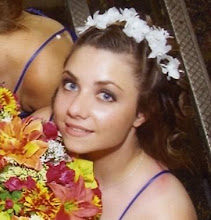Subscribe to:
Post Comments (Atom)
skip to main |
skip to sidebar

The peacock in mythology is often identified with - or even considered identical to - the Phoenix. The Phoenix and the Peacock both symbolize resurrection and life after death.

Masks are often thought to cover something up or to function as a disguise. I offer that a mask can provide layers to one's presentation and that a mask can offer projections of oneself that are interchangeable or, even, bisected. In the Internet world, the screen can be a mask one looks through, and while some might argue that this is how one hides, I argue that sometimes a mask helps one really project the self in all its different forms.
The Peacock

The peacock in mythology is often identified with - or even considered identical to - the Phoenix. The Phoenix and the Peacock both symbolize resurrection and life after death.
About Me

- Katie
- Some words to describe me: scholar, thinker, writer, poet, nature lover, beach comber, hiker, Mongolian BBQ master eater, homey, sarcastic, loyal, and fair.
Blog Archive
-
▼
2008
(17)
-
▼
April
(11)
- Myspace... or MyCompany'sSpace... Hmm
- A Comment Turned Post
- A Film Imprisonment
- Questions
- Beating Authenticity – A Fragmented (Frustrated!) ...
- Reading is "Lonely" - Technology is "Social"
- Response to Niemeyer Podcast
- Reading Blog #1
- Writing with Technology and Living with Technology...
- Writing with Technology
- Introductions
-
▼
April
(11)
3 comments:
I bet the image voice sounds like an annoying telemarketer that calls at dinner time trying to sell you carpet cleaner.
I'm just kiddin! I'm a tad hyper..
This is a very interesting question and I think you should bring it up in class :)
In film studies, there is the auteur theory which looks at a filmmaker's body of work for elements or characterizations that signify that particular filmmaker's "style." For example, Tarantino has a certain style, Fellini has a style, Tim Burton, etc.
I would say that this "style" that they are referring to is more like the collective voice of the body of work. Much like we can trace Hemingway's voice in his writing, I think we can trace a voice through the images presented to us by filmmakers. Of course they use the element of sound in their productions, but think of Ansel Adams. Doesn't his still photography have a voice? Doesn't a blank computer screen somehow not have a voice?
Perhaps I am confusing voice with tone, but the two seem to me to be very closely related. What do you think?
I think that is a great point, Gina - yes, visuals definitely have tone. I guess when I was thinking of the question, it came to me because I noticed that when I read linear text, I hear an author's "voice." When I look at an image, I don't "hear" that voice necessarily. So, I posed the question. Yes, images, especially collectively, definitely do display a form of voice - but it is different from that voice I hear in linear text. Thanks for the comment!
Post a Comment